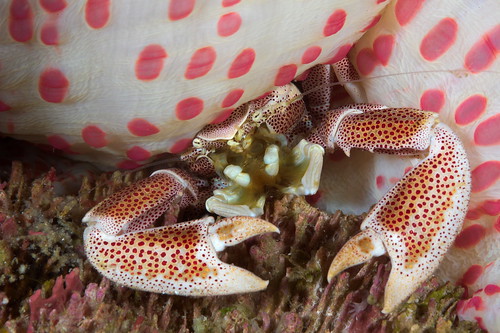Pacificklaus Island Review: Camiguin
On the north side of the large Philippine island of Mindanao lies much smaller Camiguin, a green spot in the Bohol sea, and almost the archetypical tropical island paradise. It has it all: several cloud-covered volcano peaks, stunning coral reefs and enigmatic historical sites. The people of Camiguin speak Visayan, as on the island to Camiguin’s northwest. As in all of the Philippines, folks also speak at least reasonable English and they are friendly and easy-going. A couple of people jokingly offered to hook me up with a new girlfriend, and one market lady laughed wile offering to get me in touch with a potential boyfriend. And all I really wanted was some pineapple!
I hiked up one of the volcanoes of Camiguin, mount Hibok Hibok. I think I am in reasonable shape: I usually train a few times a week, even if it is mostly strength training, and not cardio. And even cardio-wise, I walk a lot, and occasionally go for long ocean swims. Still, Hibok Hibok kicked my lobot (ass). My guide was a small dude in his 50s, one of these guys with veins running all across his legs. He was moving a bit faster than myself. The hike led us through tropical agricultural areas with coconuts and banana plants, then into a low-land rain forest, and then into some magnificent highland rain forest. The vegetation was so dense that we had to push it aside on some parts of the track. Mosses were hanging from the trees like the beards of old very old men. Birds were singing, but rarely seen in the dense forest. Just from the fog I was completely soaking wet.

After about 5 hours of hiking up through steep muddy narrow paths, we reached the caldera of the volcano, which was mostly filled with a lake. We rested and ate. One minute the sky was clear and sunny, only minutes later clouds dropped in from over the crater’s edge and filled the whole caldera. What a spectacle! When the skies were clear again, I could observe a young fishing eagle hunt for frogs in the volcanic lake.
After the hike I was about as exhausted as I had ever been. I had fallen about then times on the slippery way back. My legs felt like sour lead. In my 20s, the American Football team I was playing on had not enough linemen, so I played offensive and defensive line during one game held in the intense summer heat. In the third quarter I collapsed from overheating, took a few plays off, put my helmet back on and finished the game. I had two sacks in that game and allowed none myself. I was more exhausted after the Hibok Hibok hike than after that game.
There are public hot springs in Camiguin, in a wonderful open air setting with tropical tree giants on the slope of the volcanic mountains. The hot springs are a fun place to chill, even though they are not particularly hot.
Also definitely worth checking out: A church, destroyed by a volcanic eruption, now overgrown by tropical vegetation. It looks like right out of the Indiana Jones movie. There is also a via dolorosa, Jesus’ walk to his crucifixion, re-done with life-sized concrete models of Jesus, the Romans, Pontius Pilatus ect. All of that is set on the slopes of a walk up an older, lower volcano. A bit tacky, for my taste, some of the Roman Legionaries look stoned or on downers. But it’s certainly a unique thing to see, some Middle Eastern fable happening all over again on a Pacific volcano. These are the things which make the Philippines so charming: islands not only have pretty beaches and great reefs, but often unique bits of local history and natural history.

The diving in Camiguin is quite superb: extensive, healthy hard coral reefs, populated by a large variety of fishes. I was especially taken by the diversity of the wrasses and damselfish playing between the abundant finger corals. The marine co-system is what could be called mildly disturbed: no masses of sharks like on completely pristine reefs (but that is rare on Planet Earth in the Anthropocene), but very diverse corals, diverse fish, and lots of medium-sized predators like snappers and emperors. Turtles, too.


There is a sunken cemetery, which slipped into the ocean during the 1871 volcanic eruption on Camiguin. It’s a top dive site, but none of the gravestones are visible anymore. A stone cross was sank at a later time, and the corals have also started to overgrow it. A large cross, above the water, on a small artificial island just off the coast commemorates the location of the cemetery.
I originally had planned to dive with Dive Special Camiguin, but the owner who was supposed to dive with me got sick and was so friendly to hook me up on short notice with Johnny’s. A good dive operation; we did long, relaxed dives, and they picked me up from my accommodation by boat.
I stayed with July’s Seaside Heaven, which is a very friendly budget place right by the sea. They own a Palawan Hill Mynah bird which would say “guapo” (handsome) when I walked by. Clever bird. There are also a number of up-market places available.
I was mainly spending time in the barangai (district) Yumbing, where my accommodation was located, and I didn’t find anything special dining-wise. That might be better in the main town of the island. The traditional little corner barbecues were just fine, though, if you like bbqued chicken, which I do.
Camiguin gets a Pacificklaus island rating of 4.26 out of 5 gobies.
The flight from Cebu City, with Cebu Pacific, is scheduled for 50 minutes, but curiously only takes about half that time. Happy diving!
